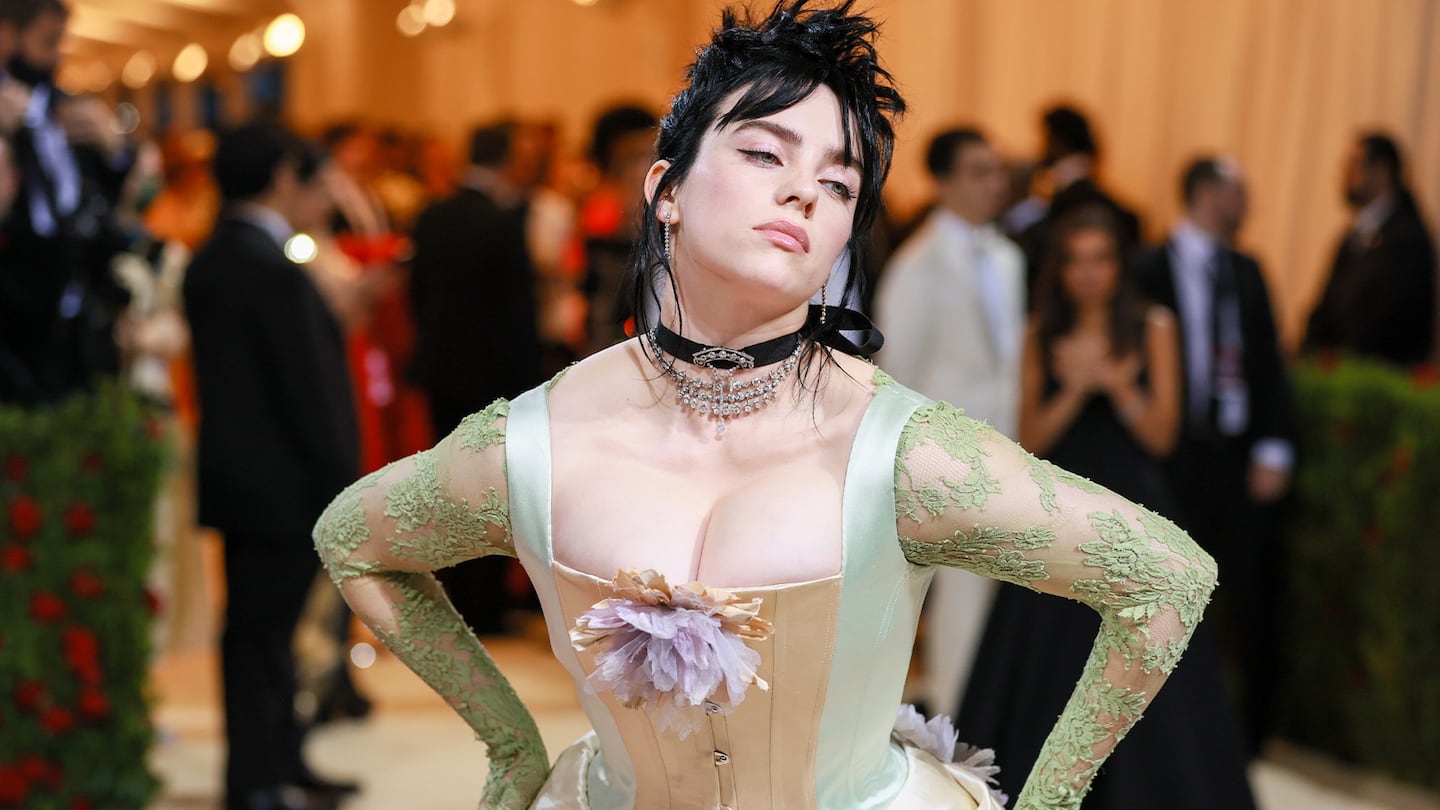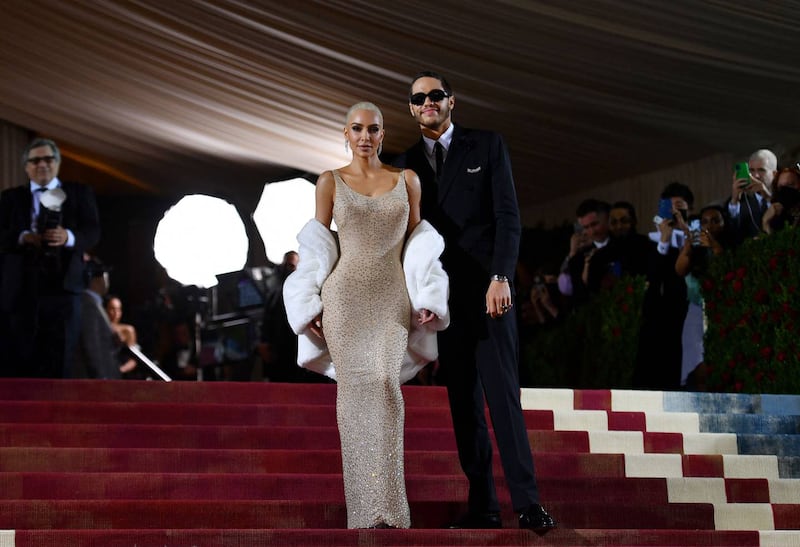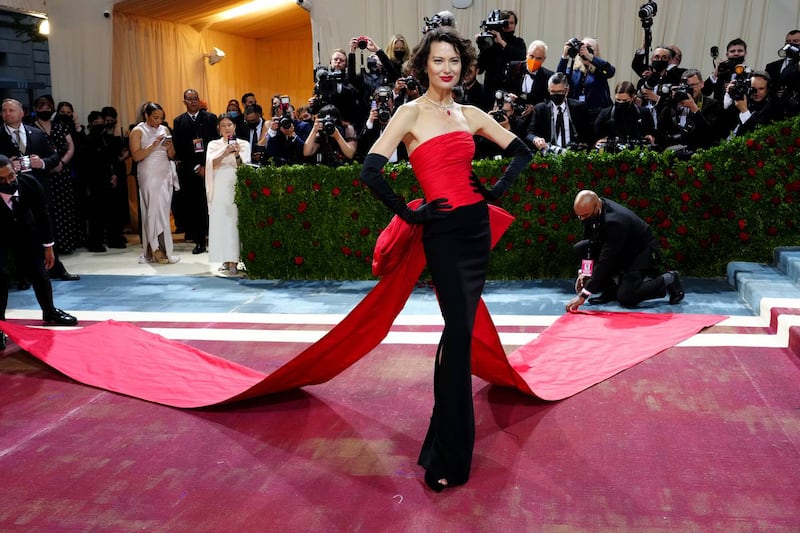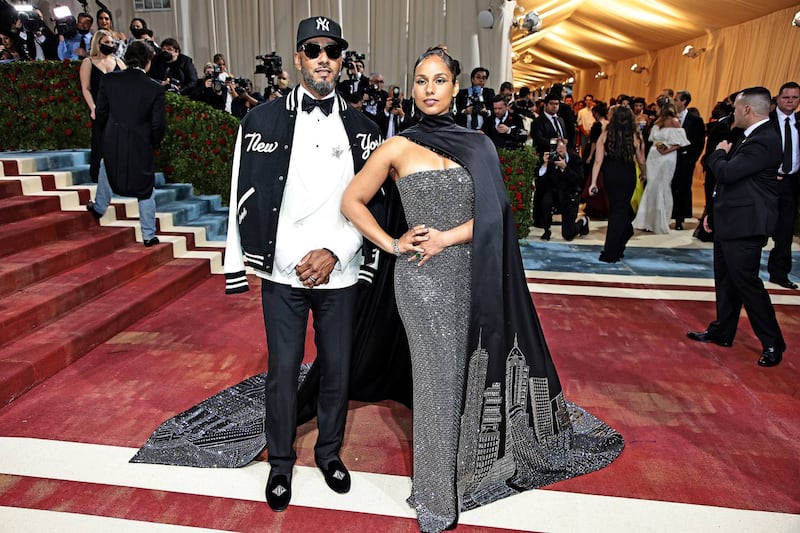
The Business of Fashion
Agenda-setting intelligence, analysis and advice for the global fashion community.

Agenda-setting intelligence, analysis and advice for the global fashion community.

It was all about Kim Kardashian’s Marilyn Monroe dress … until it wasn’t.
On Monday night, the Metropolitan Museum of Art’s annual fundraiser for the Costume Institute drew an array of stars, dressed to the nines in custom creations reflecting the opulence of the evening’s theme, “Gilded Glamour,” taken quite literally by those wearing gold. But it wasn’t until Kardashian showed up in a sparkling tank first worn by Monroe in 1962 when she infamously sang “Happy Birthday” to President John F. Kennedy — sold at auction in 2016 for $4.8 million — that the red carpet shined brightest.
Then, just as Kardashian arrived, real-world events intruded. Politico reported that the Supreme Court was preparing to strike down Roe v. Wade, splitting social media feeds between debate over the nearly unprecedented leak and gala coverage, an unsettling mix.

The news also made the subtle political statements expressed on the red carpet feel almost quaint. Hilary Clinton arrived wearing a bordeaux, off-the-shoulder Altuzarra gown designed to honour home sewers, quilters and embroiderers as well as American women like Harriet Tubman, Mary Oliver and Ruth Bader Ginsburg. New York City Mayor Eric Adams — who quickly cosied up to fashion insiders after taking office in January — wore a decorative tailcoat illustrated with New York City landmarks and the phrase “end gun violence.” Many guests, including climate activist Xiye Bastida in Chloé and Camila Cabello in Prabal Gurung, expressed their desire to wear environmentally conscious fashion, while Billie Eilish wore a Gucci corset made from deadstock materials.
ADVERTISEMENT
But the proceedings were already more subdued than last year’s pandemic-era party. The morning’s press preview of “In America: An Anthology of Fashion” — which guests will be able to view before the dinner — set the tone.
American First Lady Jill Biden delivered remarks during the preview before taking a private tour of the exhibit, telling members of the press she believes in fashion as a way to communicate, particularly around the US’ allegiance to Ukraine amidst “Putin’s war,” noting how, at the State of the Union address in March, she wore a deep blue LaPointe dress with a sunflower, the Ukrainian national flower, embroidered on its sleeve.
While the Gilded Age — the evening’s inspiration — itself was an era of tremendous prosperity in the US as industrialisation transformed the economy, it also saw the rise of unions as factory workers, farmers and other skilled and unskilled labourers banded together to demand better working environments and higher pay. The actor and producer Riz Ahmed’s look, which included a custom ribbed white tank and overshirt by Salvadoran-American designer Angelo Urrutia’s label 4SDesigns, paid homage to working-class immigrants.’

On Sunday, the Condé Nast union — yet to be recognised by the company, which owns Vogue among other publications — posted a mock issue of the magazine on Instagram with the cover line, “Met Gala 2022: Workers’ Longest Night,” underscoring the extra work done by staffers and freelancers alike leading up to, and during, the event. (Anna Wintour, the magazine’s editor and a top executive at the publisher, is also the lead fundraiser for the Met Gala.)
While the gala’s primary goal is still to raise money for the museum, in recent years it has also become a brand-building opportunity for Vogue as it looks to diversify its revenue streams. Advertisers including Patron, White Claw, Google, Polestar and T-Mobile surrounded the avalanche of content, starting with actors like Evan Mock touting pre-party activities for Motorola.
As for the brands that made an impression on the red carpet, mainstays like Louis Vuitton and Prada all had an outsize presence, with Ralph Lauren standing apart, from Swizz Beatz’s Yankees jacket to Shalom Harlow’s black taffeta column and lipstick-red sash.

Versace was the evening’s big winner, thanks to co-chair Blake Lively’s mirrored gown, rendered in copper and designed to patina — just like the Statue of Liberty — as she walked up the stairs of the Met. The Capri-owned Italian label accounted for 44 percent of all designer mentions on social media, the most of any brand, according to Brandwatch, which tracks conversations online. Jeremy Scott, Ralph Lauren, Moschino and Thom Browne followed.
But in an evening overwhelmed by heavy news, conversation around the gala as a whole was down more than 900,000 mentions from 2019.
What began as a fundraiser for the Metropolitan Museum of Art’s Costume Institute has also become a major revenue opportunity for publisher Condé Nast.
Fashion publishers have long relied on cultural cachet and perks to lure talent, even as salaries dwindled. But as magazines restrict sponsored content opportunities and pull back on travel, recruiting top talent has become harder than ever.
Inside Vogue’s strategy for winning over local audiences in Asia after a restructuring that gave Anna Wintour control over global editorial operations.
Well, not exactly. But some surprising names made an impression on the red carpet alongside the likes of Loewe, Alaïa and Balmain.
The designer — whose bright, arty clothes earned him a place in the 2021 LVMH Prize Finals, and a guest designer post for Louis Vuitton — curated a set at the Netflix Is a Joke Festival this weekend, the latest example of his creative approach to building brand awareness.
Practitioners of this historically behind-the-scenes profession are building powerful followings, riding a wave of interest in how the fashion sausage is made. But even the highest-profile PRs caution that the client still has to comes first.
Join us for a BoF Professional Masterclass that explores the topic in our latest Case Study, “How to Create Cultural Moments on Any Budget.”